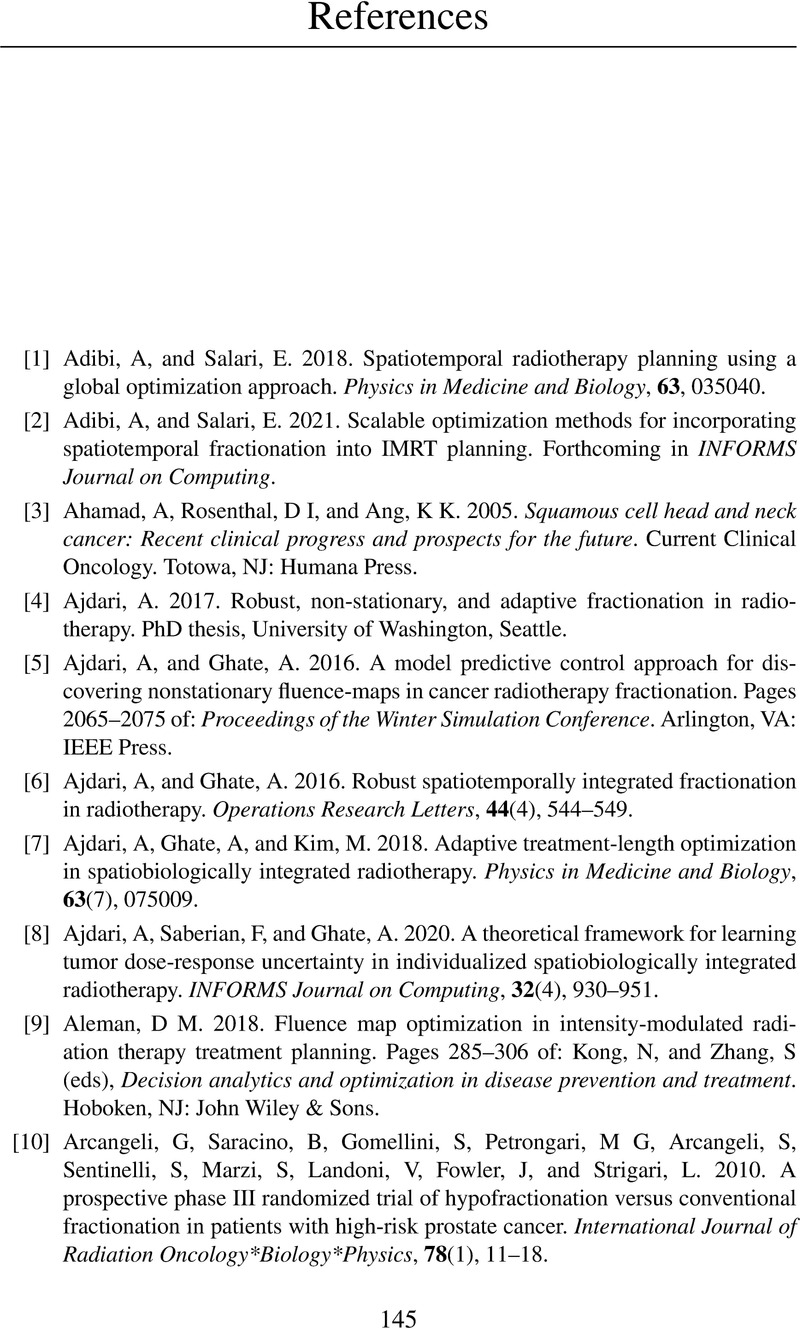Book contents
- Frontmatter
- Dedication
- Contents
- Preface
- 1 Introduction
- 2 Fractionation with a Single Organ-at-Risk
- 3 Fractionation with Multiple Organs-at-Risk
- 4 Robust Fractionation
- 5 Inverse Fractionation
- 6 Spatiotemporally Integrated Fractionation
- 7 Robust Spatiotemporally Integrated Fractionation
- 8 Fractionation with Two Modalities
- 9 Robust Fractionation with Two Modalities
- 10 Directions for Future Work
- Appendix Background on Optimization
- References
- Index
- References
References
Published online by Cambridge University Press: 05 October 2023
- Frontmatter
- Dedication
- Contents
- Preface
- 1 Introduction
- 2 Fractionation with a Single Organ-at-Risk
- 3 Fractionation with Multiple Organs-at-Risk
- 4 Robust Fractionation
- 5 Inverse Fractionation
- 6 Spatiotemporally Integrated Fractionation
- 7 Robust Spatiotemporally Integrated Fractionation
- 8 Fractionation with Two Modalities
- 9 Robust Fractionation with Two Modalities
- 10 Directions for Future Work
- Appendix Background on Optimization
- References
- Index
- References
Summary

- Type
- Chapter
- Information
- Optimal Fractionation in Radiotherapy , pp. 145 - 154Publisher: Cambridge University PressPrint publication year: 2023



